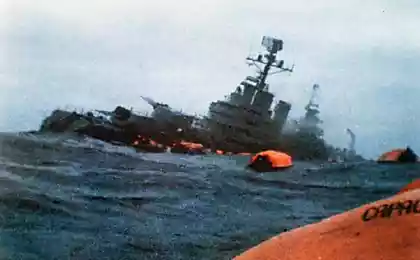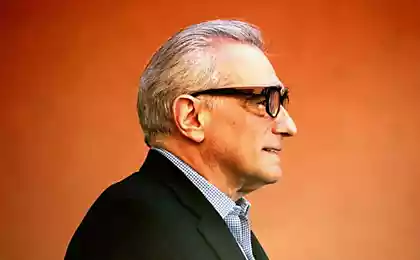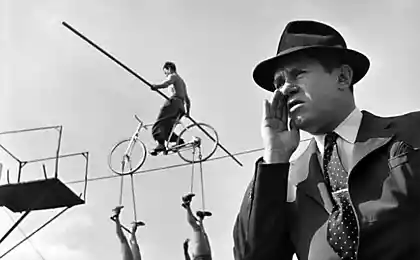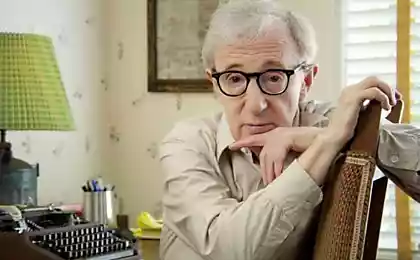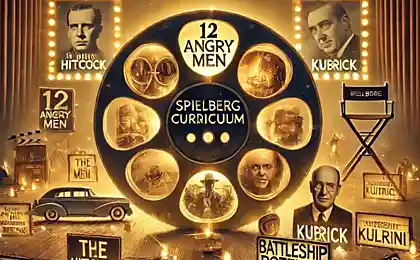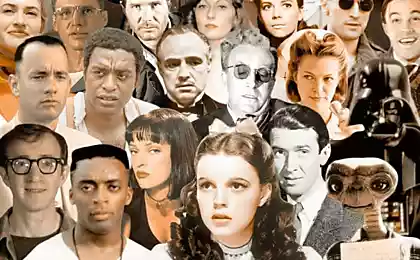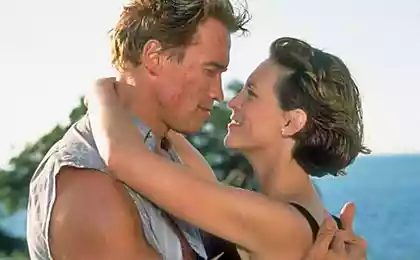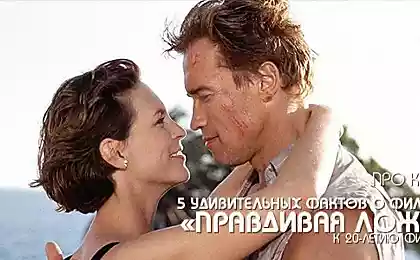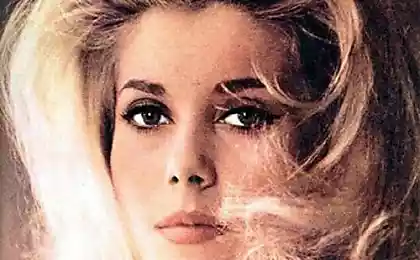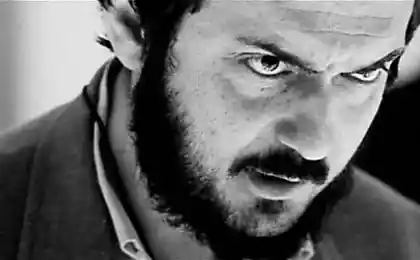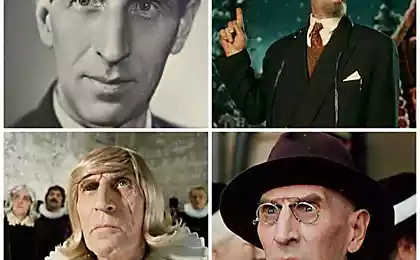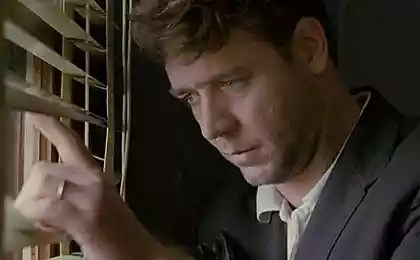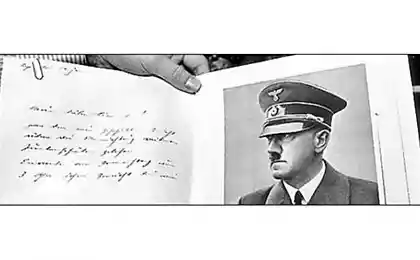1496
Master the work of Stanley Kubrick
Stanley Kubrick (July 26, 1928 - March 7, 1999) - American film director, screenwriter, film editor, cinematographer and producer, one of the most iconic and innovative filmmakers in history.
Stanley was born in New York in a family of immigrants from the Austro-Hungarian Empire. His father taught him to play chess, which he was obsessed all his life. Furthermore, it is the father bought a 13-year-old Stanley camera Graflex. Back in high school, he was chosen for the year of official school photographer, though not distinguished by excellence. In 1946, Kubrick began to seek work as an independent photographer and look for a place of study. He managed to find part time in the magazine Look, which later got a job as a staff photographer. In addition, Kubrick earned playing chess in Washington Square and various chess clubs in Manhattan.
In 1951, one of Kubrick, Alex Singer persuaded him to try to make a shooting short documentaries for the company «March of Time». Stanley agreed, and on the money made a documentary short film "Day of the Fight." The film, in particular, was used an unusual shooting style, which has become one of the brightest operator receptions Kubrick. «MoT» went bankrupt in the same year, but sold Kubrick film production company «RKO Picture». To which later took 2 more documentaries: "Flying Padre" (1951) and "Seafarers" (1953).
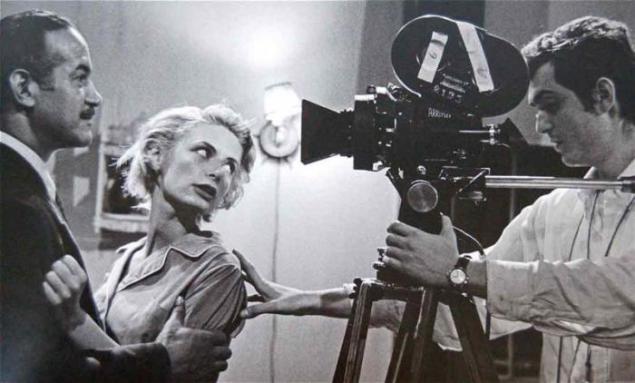
"Killer's Kiss" in 1955 became a short film, lasting a little over an hour. The tape was made entirely on the money Kubrick and donations of friends. It describes the heavyweight boxer, located at the end of his career, he falls into a love triangle in which his opponent was involved in criminal cases.
This is the first serious work director.
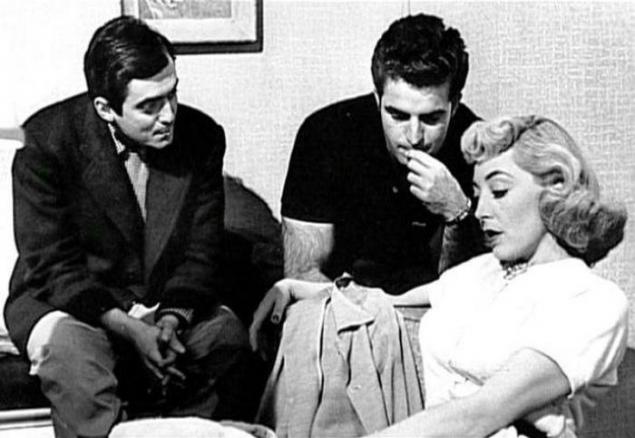
"Murder" - a classic heist film, Kubrick filmed in 1956 based on the novel by Lionel White. Almost all of its future films will be shot based on literary works.
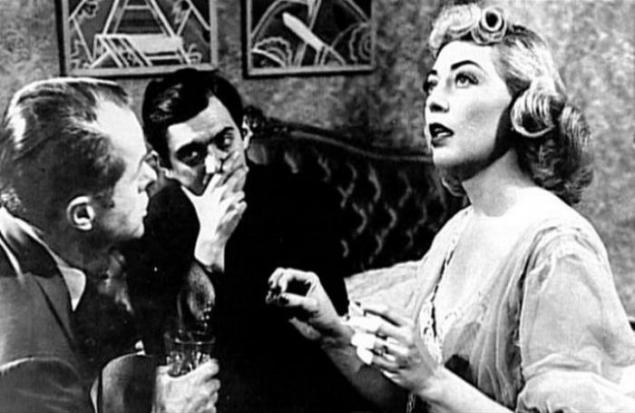
After reaching the screen-film robbery "The Asphalt Jungle" and "Rififi" this young genre was considered the key to good box office. Kubrick invited the main role of Sterling Hayden's "The Asphalt Jungle" used many innovative techniques, but the film did not bring the expected profits. But Kubrick has established itself at the rank of one of the most promising directors of America.
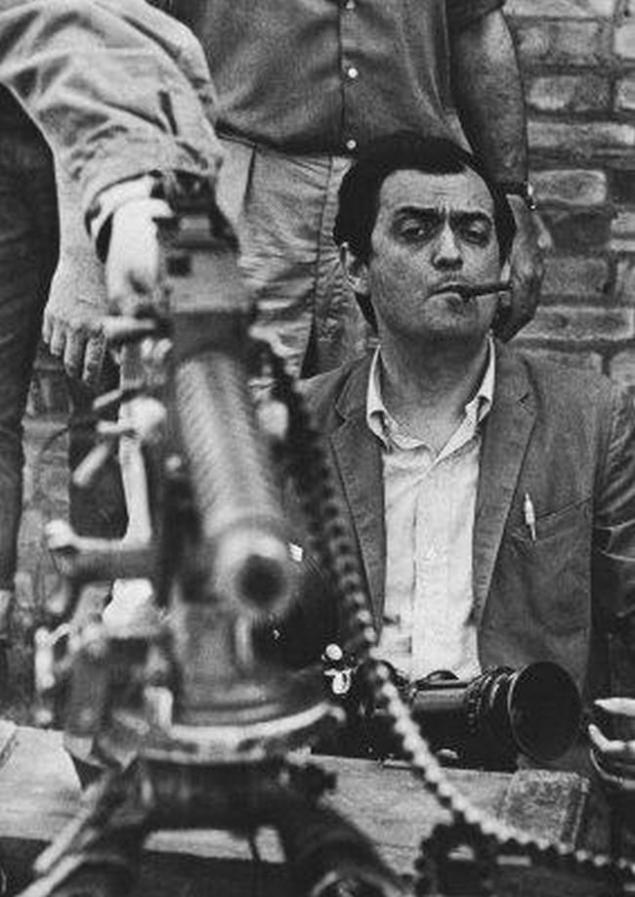
"Paths of Glory" - a film about the events of the First World War, shot in 1957 in the vicinity of Munich Schleißheim Palace 28-year-old at the time Kubrick on the book of the same name Humphrey Cobb.
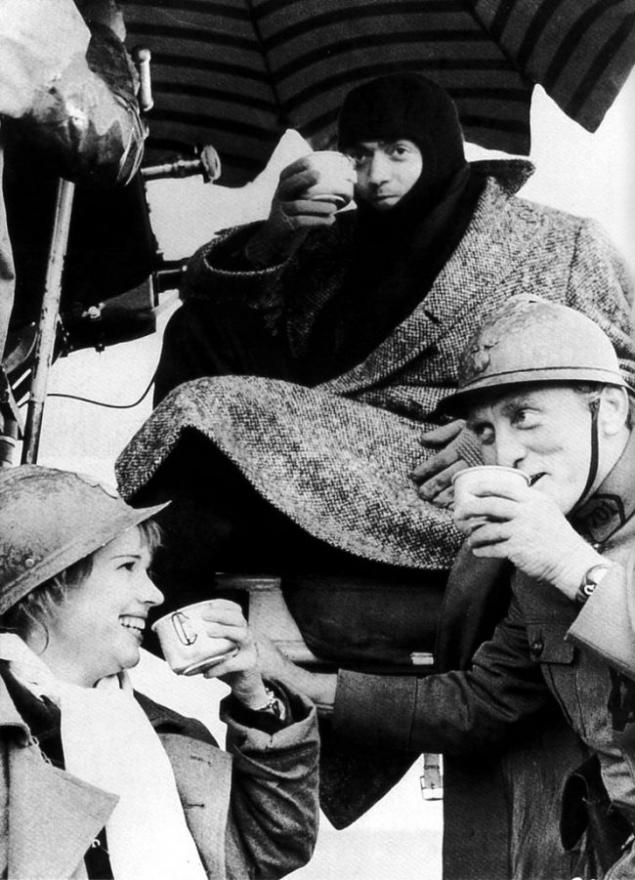
Kubrick with Kirk Douglas and Christiane Susanne Harlan (in the credits appears as Suzanne Christian). In 1958, she became the wife of the director.
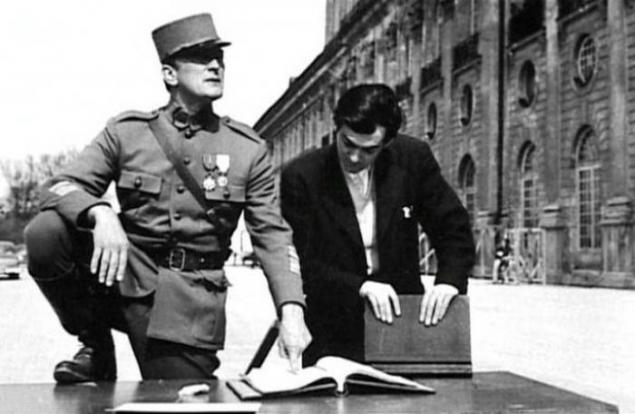
Kirk Douglas as Colonel Dax. In 1960, the actor was the role of Colonel Dax called the best in his career. During filming, the young director showed his later became the legendary steadfastness, "banishing" honored actors who suited his parents and grandparents, through an infinite number of doubles.
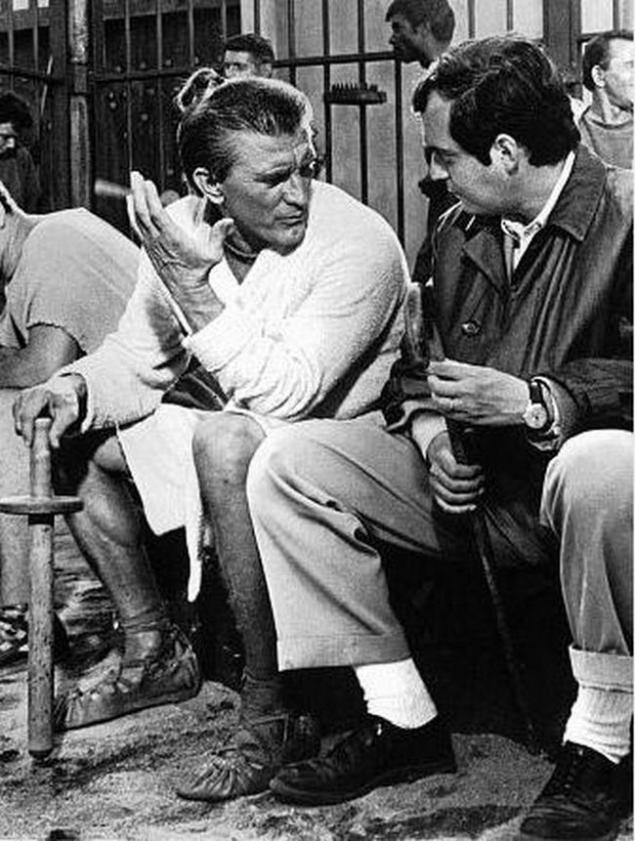
"Spartacus" - a historical film, shot in 1960, Kubrick on the novel by Howard Fast. Kirk Douglas is not only starred in the film "Spartacus", but also co-produced the project. After shooting at Kubrick in "Paths of Glory" Douglas asked Stanley to take the director's duties for the production of the film, as the previous picture directed by Anthony Mann was fired by the studio two weeks after the start of production.

Together with Tony Curtis and Laurence Olivier.
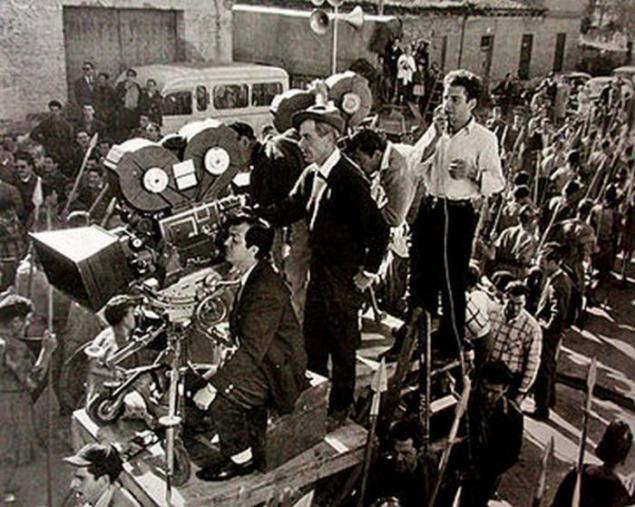
Kubrick and cinematographer Russell Matty (hat) on the set.
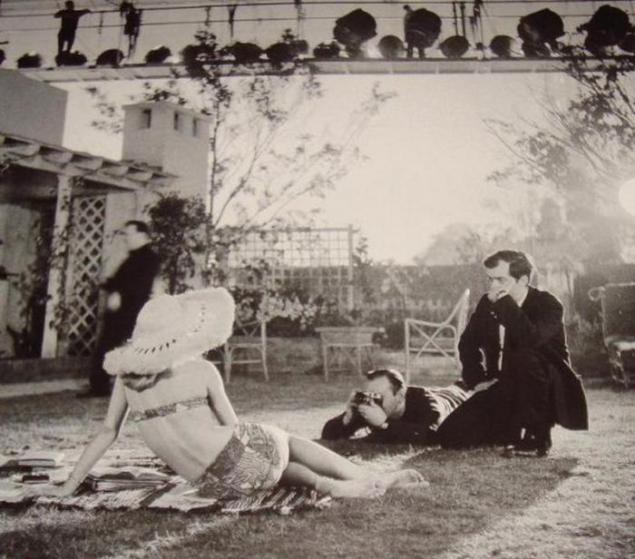
"Lolita" - Kubrick's film 1962, filmed on the novel by Vladimir Nabokov. Nabokov was one of the writers of the picture. To make a movie, Stanley moved to England, where he lived until his death.
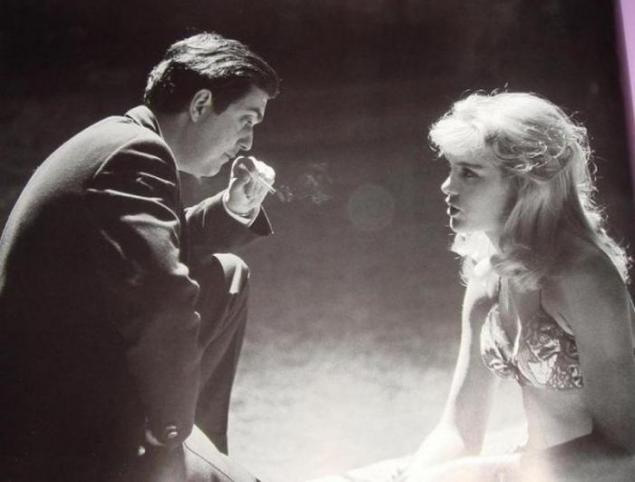
Selection of the actress in the role of Lolita was complicated by demands of censorship and possible reaction of public opinion. Age heroine of the film was increased to 14 years (12 in the novel). Kubrick was leading the search for the actress, reviewing more than 800 photos. In the summer of 1960 in a show of Loretta Young Kubrick saw 14-year-old Sue Lyon, who eventually performed Lolita. For his role Sue Lyon won the "Golden Globe" in the nomination "The most promising budding actress».

Kubrick "kills" Clare Quilty, County Clare. In the film, it makes Professor Humbert.
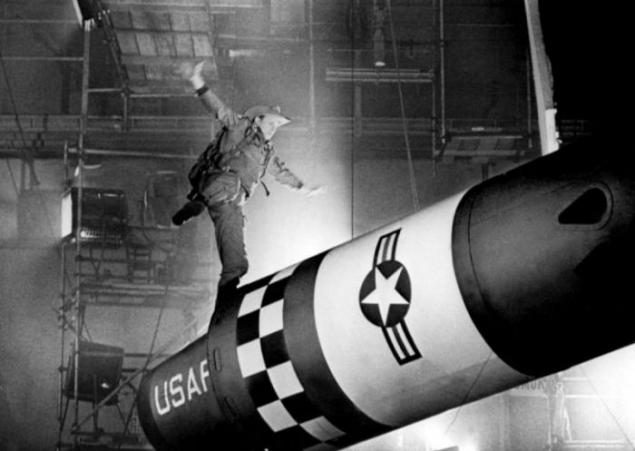
"Dr. Strangelove" - a satire on the anti-militarist military programs the US government's Cold War. The film was shot in 1963 and released in 1964. The film rolled in a freestyle adaptation of the novel by Peter George "Red Scare." Unlike the novel, which is a drama, the film is a tragicomedy.

Columbia Pictures agreed to finance the film, provided that Peter Sellers will play at least four main roles. Kubrick took this requirement, but because of an ankle injury Sellers eventually played only three of the four roles written for him.
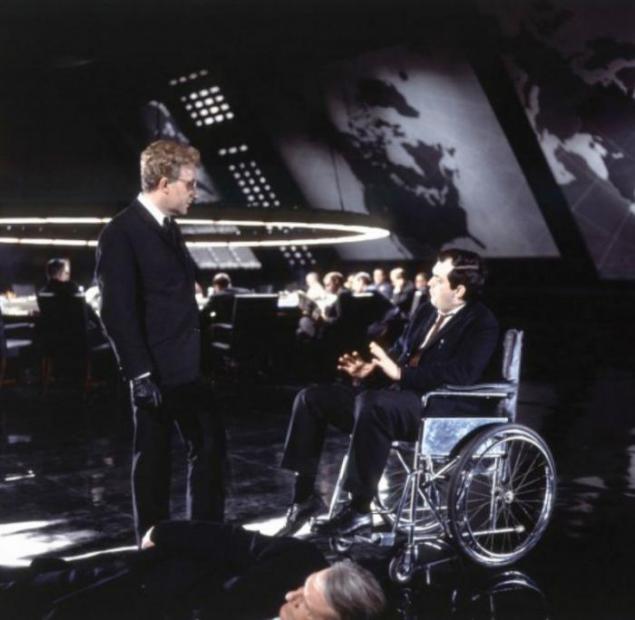
Kubrick shows Sellers as Dr. Strangelove, he sees - wheelchair-bound expert on nuclear issues of the war.
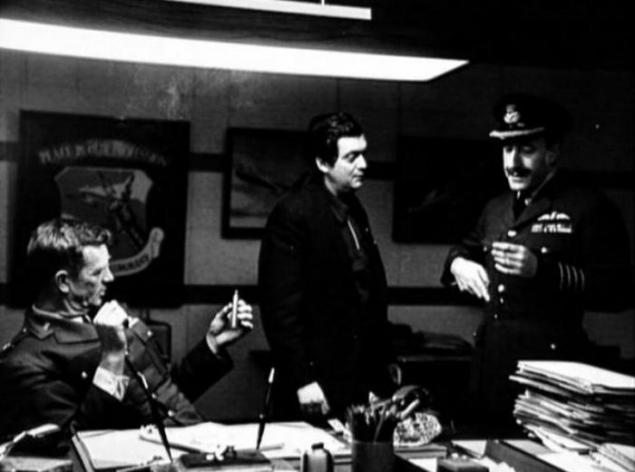
Sellers in the role of Lionel Mandrake (with a mustache) - Captain of the British Air Force.

Kubrick and "president" Sellers.
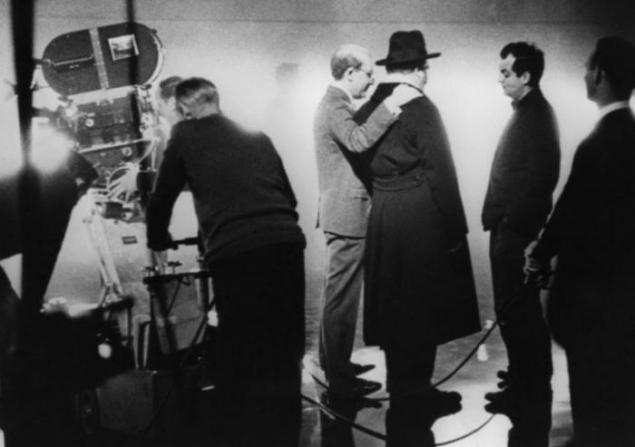
President and Commander in Chief of the US called Merkin maffliers. Maffliers surname can be translated as "muttering under his breath».
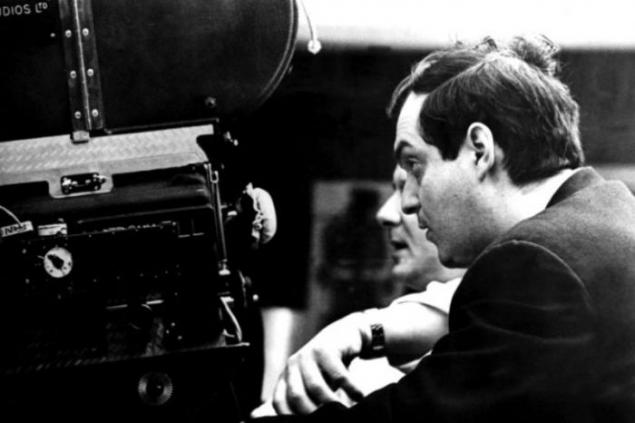
Later, Kubrick Sellers called "incredible", but expressed regret due to the fact that the actor is rarely enough power for more than two or three takes. To overcome this problem, Kubrick filmed with two cameras simultaneously, giving Sellers improvise.
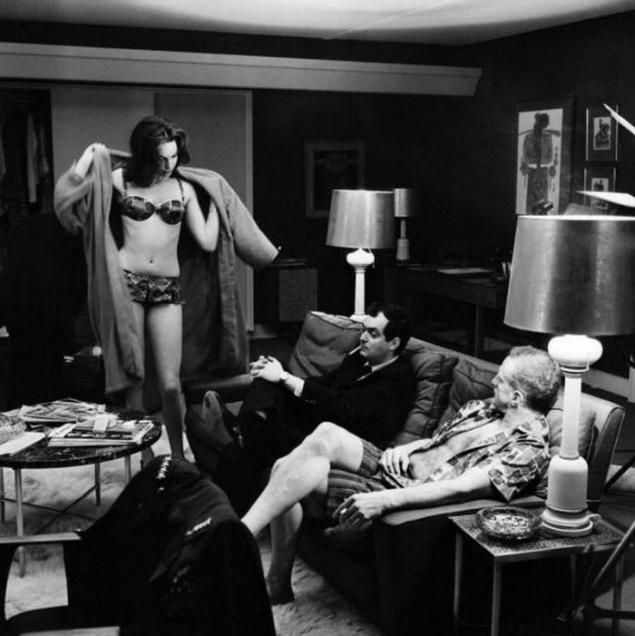
Kubrick with George C. Scott, who played General "Buck" Tёrdzhidsona and Tracy Reid. Character name Miss Tracy Scott - it was the only female character in the film. Miss Scott was general secretary and mistress Tёrdzhidsona.
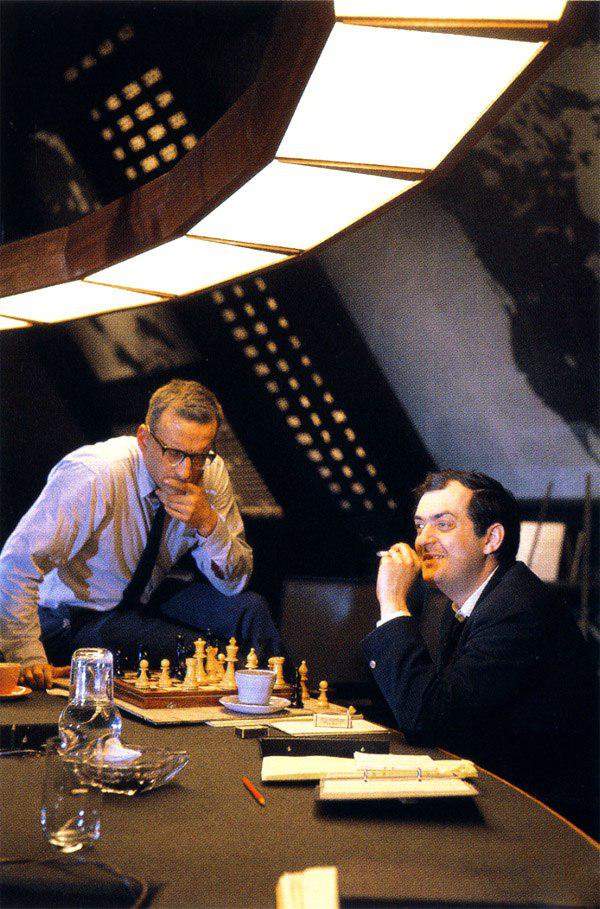
Stanley Kubrick was fond of chess and often played shooting with the troupe. On shootings Streyndzhlava Kubrick repeatedly beat George Scott.
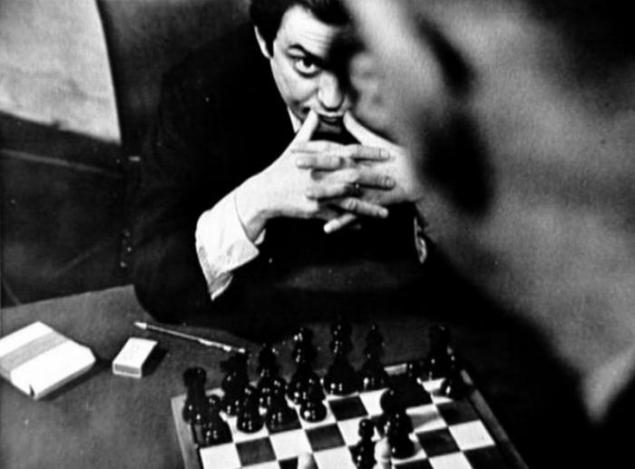
Scott himself was an accomplished player and immensely respected Kubrick for his chess skills, despite the fact that during the filming they often disagreements.
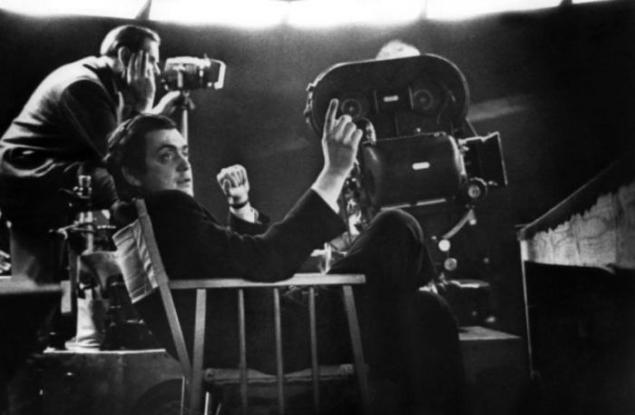
While working on Streyndzhlavom Kubrick learned that in parallel to make a film "security system" with similar themes. Stanley was afraid that if the "Security" will be released before it a serious blow at the box office. More strongly it was concerned that the project was well-known director Sidney Lumet, and the role played first-class dramatic actor Henry Fonda and Walter Mettau.
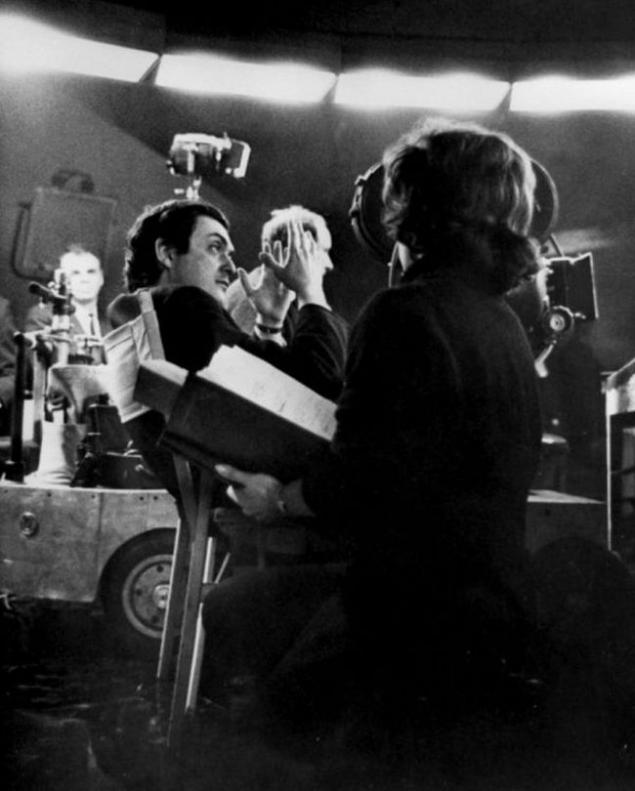
The scenario "security systems" was based on the novel, which was very similar to the "Red Scare" by Peter George. For all these reasons, Kubrick decided to start a trial of plagiarism. The plan worked and "SB" started 8 months later "Streyndzhlava».
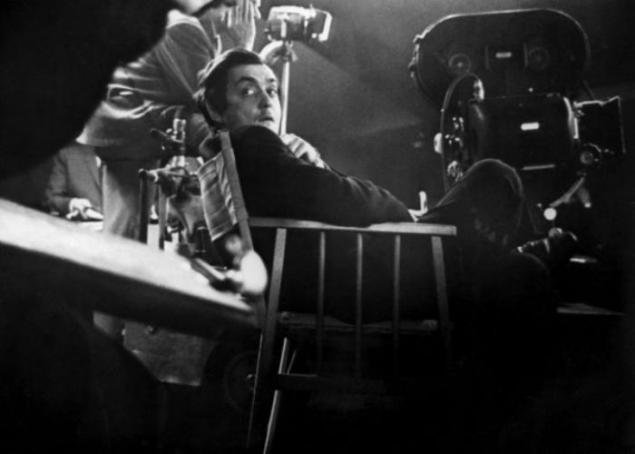
In the end the movies Dr. Strangelove exclaims: "Mein Fuhrer, I can walk!", After cutting should be from the nuclear explosions. But it was not the original ending. The film was supposed to end the battle scene cream pie in «War room». In the scene, General Tёrdzhidson exclaimed: "Lord! Our dashing young president was struck in the prime of life! ". Then the president maffliers received a pie in the face. This version eventually had to change.
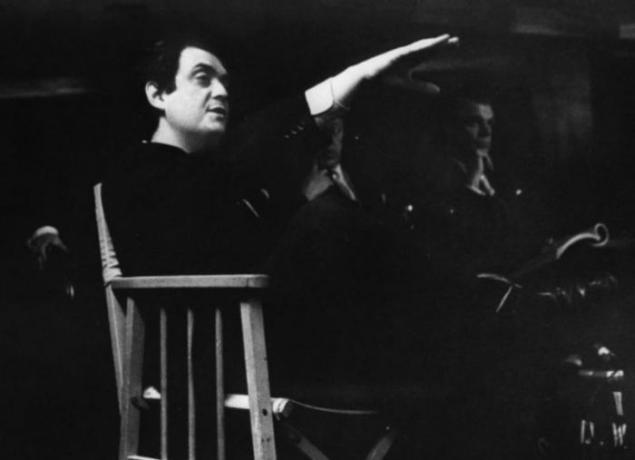
The thing is that the November 22, 1963, John F. Kennedy was assassinated. By coincidence, the first show of the movie was to be held on the same day, the Prime Minister moved naturally (at the end of January 1964). Editor Anthony Harvey later said: «Columbia Pictures was horrified by the scene, arguing that it would offend the family of President».

"2001: A Space Odyssey" - the cult science fiction film by Stanley Kubrick in 1968, which became a milestone in the development of world cinema and the fantasy genre in general. According to the American Film Institute, this is the best science fiction film in the history of Hollywood, and by the International Film Critics - and in the history of world cinema.
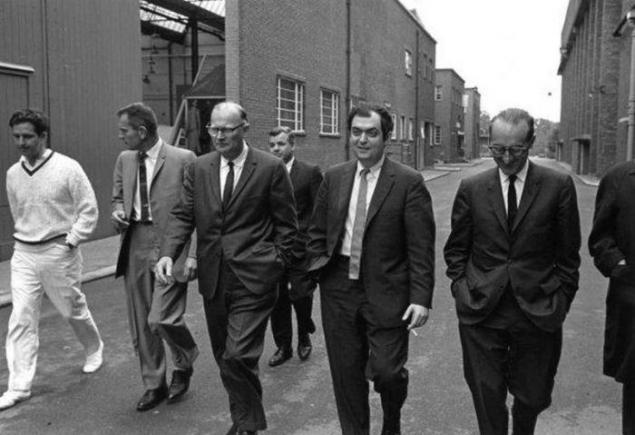
Kubrick wrote the script together with science fiction writer Arthur C. Clarke, based on the story of Clark's "The Guardian." When Kubrick Clark first met in April 1964, he wanted to make a film about the relationship of man and the universe, and Clark was going to "create a work of art that will cause surprise, awe ... and even, if appropriate, the horror." Clark offered Kubrick 6 of his stories, and in May Kubrick chose "the Guardian».
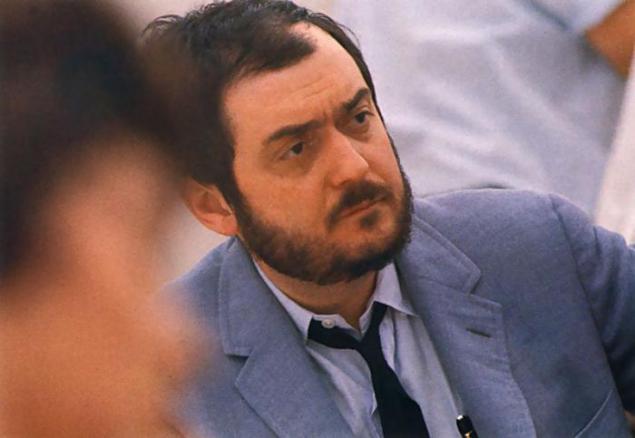
To gather more material and expand the story, Stanley spent a lot of time reading scientific works on anthropology, watching a science fiction movie and a brainstorming session.
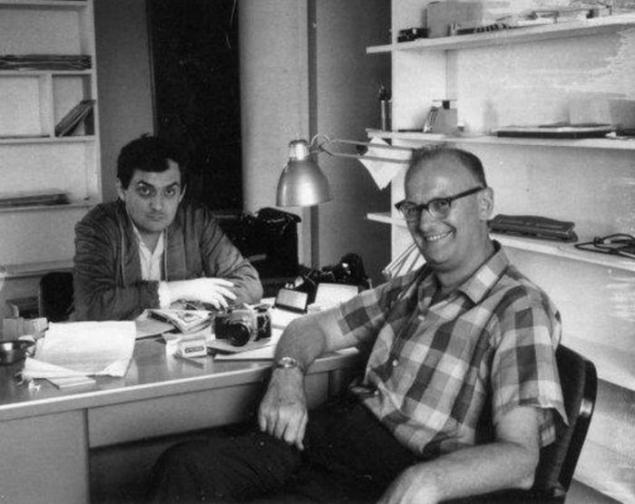
Clarke and Kubrick in two years transformed the "Guardian" in the novel, and then in the final script.
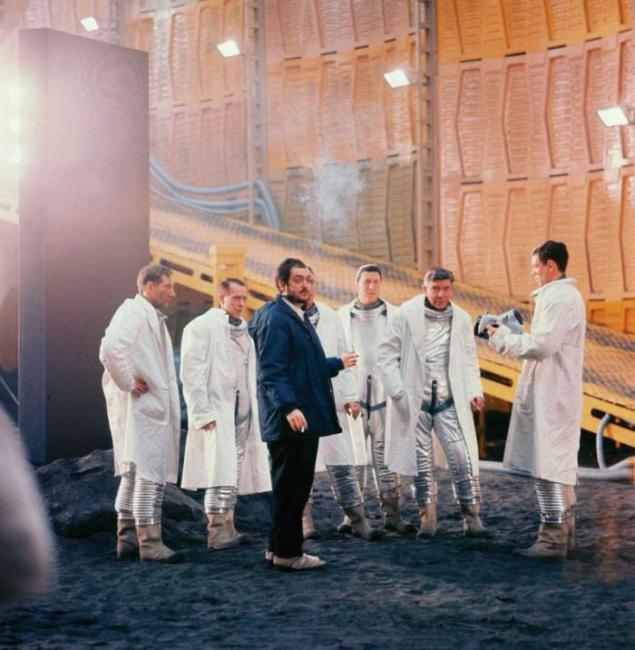
For more than two hours before the spectator unfolds leisurely plot of the film built around foreign artifacts, called "monoliths". They had the right cuboid, black, and did not respond to the effects of radiation and no tools.
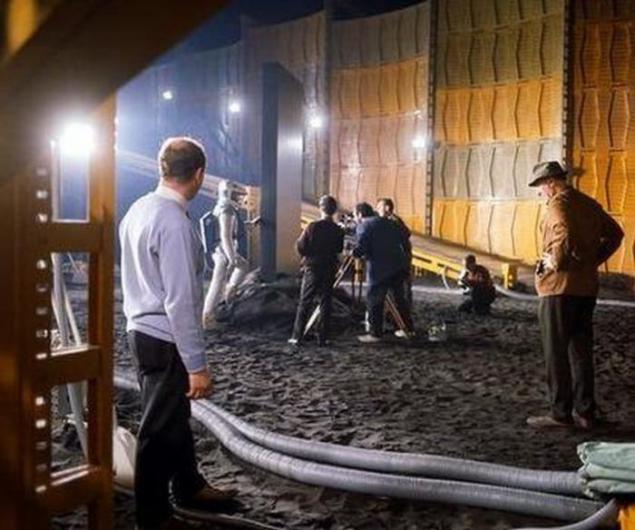
The first of them at the dawn of mankind came to earth and taught the ancient Australopithecus to use objects as tools and weapons. He was later found by archaeologists earth. When the technology people at the end of the XX century reached the possibility of visiting the moon, the moon was discovered a second "monolith". The third was discovered orbiting Jupiter. There was a group of researchers directed.
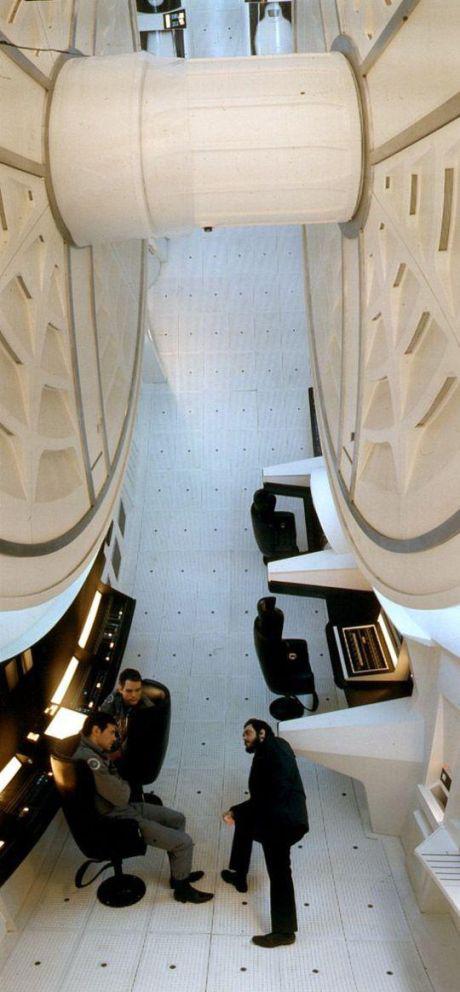
The research team was put in state of suspended animation, and trusted 3 flight crew members of the ship "Discovery" - two pilots and NASA's newest computer with artificial intelligence HAL 9000. For the spacecraft, which, according to Kubrick, had to look in the form of a huge centrifuge that creates artificial gravity due to centripetal forces, was commissioned and produced "iron wheel" in length 38 and a width of 10 feet, with reinforced its equipment. It cost 750 thousand dollars.
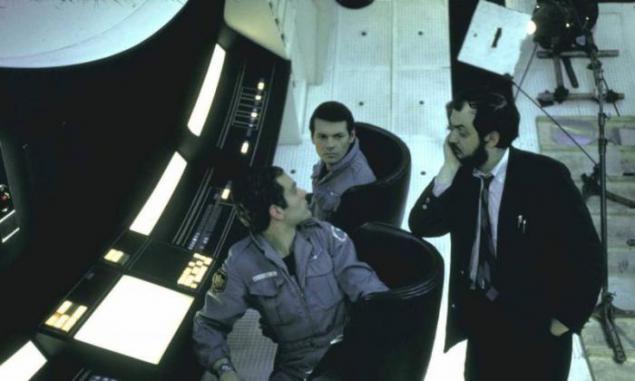
Kubrick Cyrus Dulloo with the actors who played Dave Bowman and Gary Lockwood, played the role of Frank Poole.
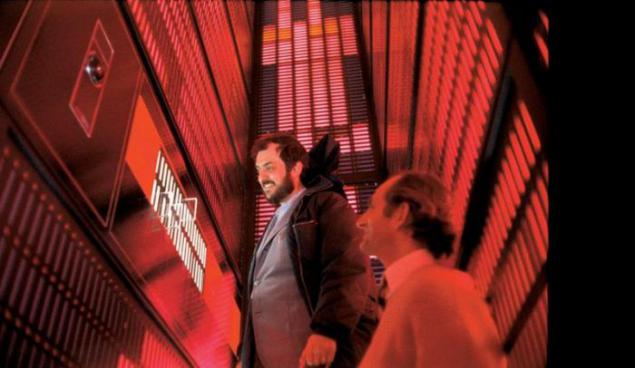
As for the spacecraft, all vehicles in the film were made very carefully. Attention was paid to even the smallest detail of the interior for greater realism.

Team modeling led by two experts from NASA research consultant Fred Ordway and director Harry Lange, he was concerned about the study of the function of each individual component of the spacecraft systems and coded individual buttons.
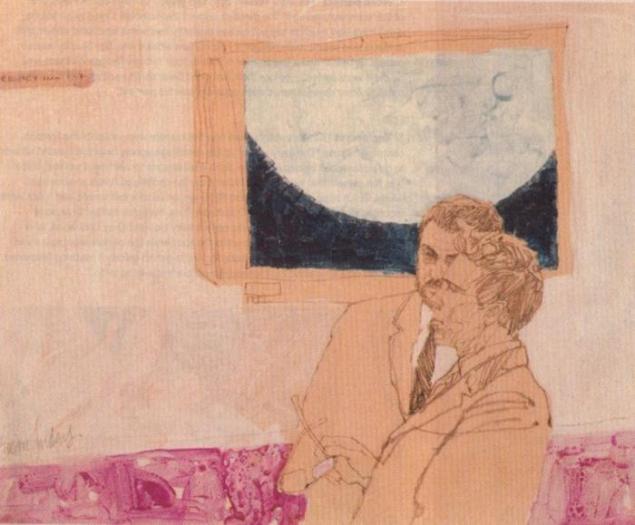
Technical aspects of the scenery was so carefully worked out that Kubrick, fearing getting photos to the press ahead of time, I decided to restrict access to the site of photographers. They were hired illustrator for two sketches of the shooting, as their work was easier to control. They were Brian Sanders (29 years old at the time) and Ian Parker (25 years old at the time). These studies are not useful in the end and remained unpublished until January 2001, when most of them have been placed in THE INDEPENDENT MAGAZINE.

Kubrick and Lockwood, a character which the computer HAL 9000 will eliminate the open space by adjusting the accident.
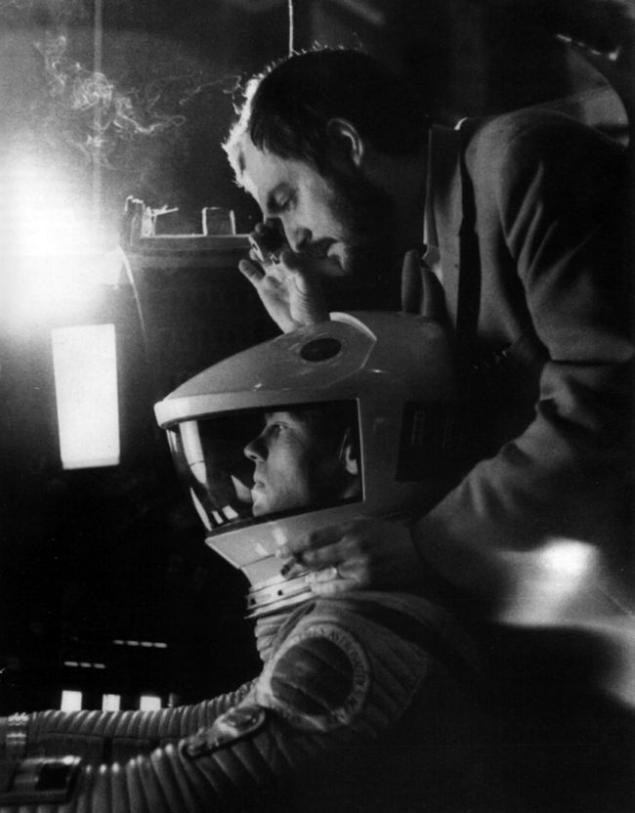
Additional footage related to the death of Pula, including all of its preparations for the spacewalk, were removed due to the fact that one critic after the premiere said that the death of Frank Poole after this scene looks "disgusting».
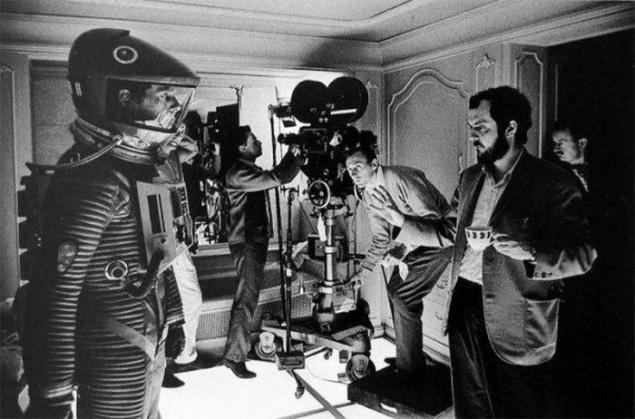
In the end the surviving Bowman managed to get to the 3rd "monolith", but when I try to study it, astronaut claimed for "infinity." Bowman found himself in a strange room, where he had a tremendous speed (for the viewer) aged. And on his deathbed 4 "monolith" Bowman turned to "The Star Child". At the end of the film the viewer sees in a new guise Bowman gazed at the Earth from space.
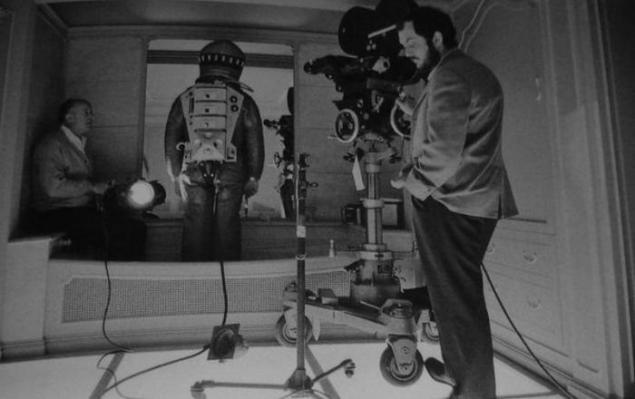
In the finals was removed a small scene where Bowman wandering in alien room in the suit, picks up from the floor at the foot of the bed slipper (it can be seen on the floor when he enters the bathroom).
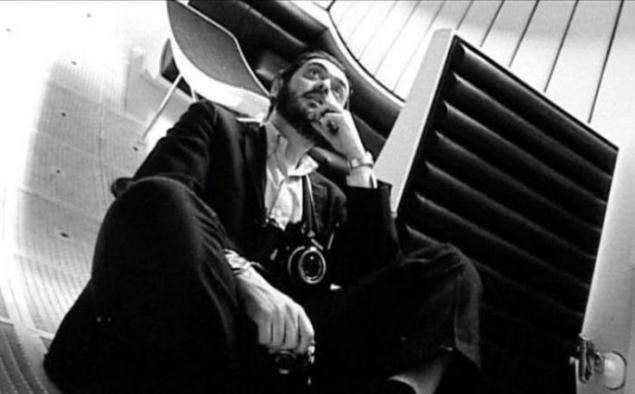
Principal photography began on 29 December 1965, while filming with the actors was completed in September 1967. From June 1966 to March 1968, Kubrick was occupied mainly develops 205 special effects for the film.

The director used a special technique to create visual effects, avoiding the deterioration of image quality using the chromakeying and Matte.

The film cost about 10, 5 million pounds, of which 6, 5 million went to the special effects. In the creation of the tape was attended by such large companies as IBM, Boeing, General Electric. When you create amazing special effects are not used in computer technology, but scientific credibility observed with high care.

For the visual effects for the film, Kubrick received the "Oscar».
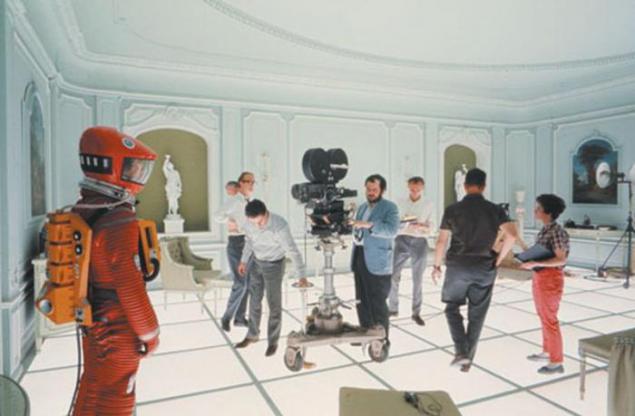
For a mainstream Hollywood film exceptionally little dialogue. The first word is pronounced only 25 minutes tape. But no less important than the "picture", the value for the perception of the film has a musical number, compiled from both the classical works because of the inclusions of musical avant-garde.
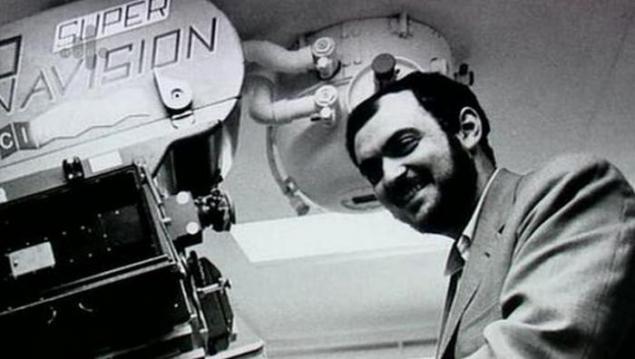
Scenes of landing on the moon, as well as the motion of astronauts, flying spacecraft state of weightlessness look so realistic that America is still widespread rumors that in the 1970s, Kubrick took part in the so-called "lunar conspiracy" and shot in Nevada scene landing American astronauts to the moon project "Apollo».
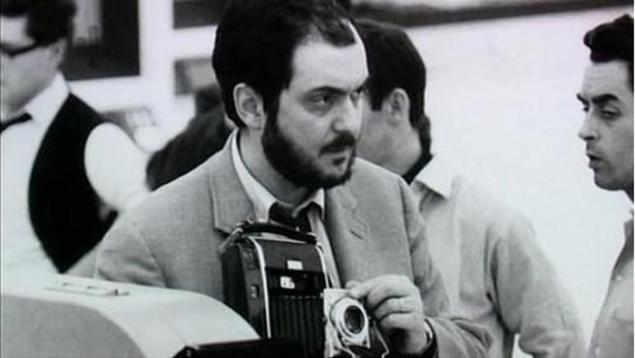
Steven Spielberg called the film a "big bang" generation, focusing on the space race. He was the forerunner of the explosion of science fiction film market nine years, which began with the release of the films "Star Wars" and "Close Encounters of the Third Kind».
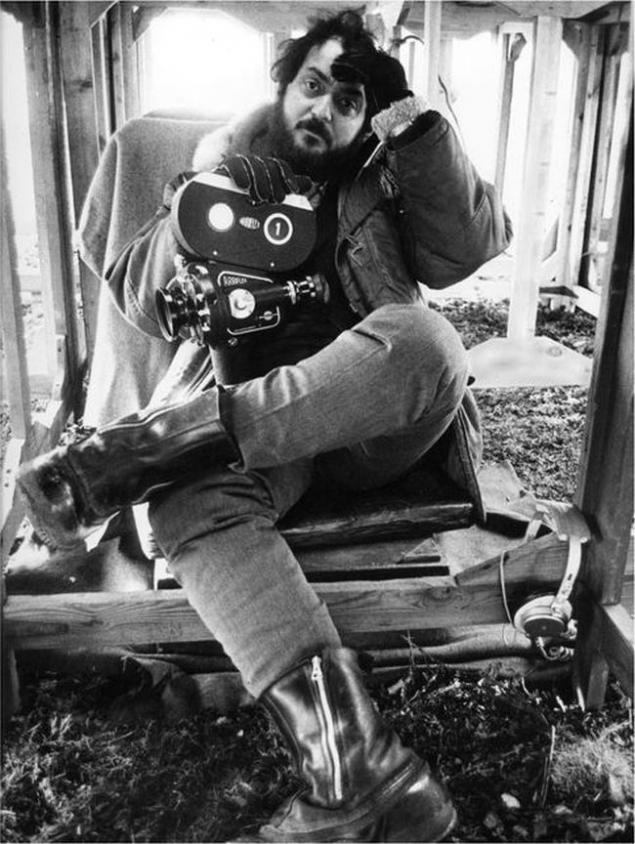
Many tape inspired to dedicate his life to cinema, such as director James Cameron. Someone dragged high technology and engineering achievements of the film. Bill Gates noted that "Odyssey" shaped his vision of the possibilities of computer technology.
Stanley was born in New York in a family of immigrants from the Austro-Hungarian Empire. His father taught him to play chess, which he was obsessed all his life. Furthermore, it is the father bought a 13-year-old Stanley camera Graflex. Back in high school, he was chosen for the year of official school photographer, though not distinguished by excellence. In 1946, Kubrick began to seek work as an independent photographer and look for a place of study. He managed to find part time in the magazine Look, which later got a job as a staff photographer. In addition, Kubrick earned playing chess in Washington Square and various chess clubs in Manhattan.
In 1951, one of Kubrick, Alex Singer persuaded him to try to make a shooting short documentaries for the company «March of Time». Stanley agreed, and on the money made a documentary short film "Day of the Fight." The film, in particular, was used an unusual shooting style, which has become one of the brightest operator receptions Kubrick. «MoT» went bankrupt in the same year, but sold Kubrick film production company «RKO Picture». To which later took 2 more documentaries: "Flying Padre" (1951) and "Seafarers" (1953).

"Killer's Kiss" in 1955 became a short film, lasting a little over an hour. The tape was made entirely on the money Kubrick and donations of friends. It describes the heavyweight boxer, located at the end of his career, he falls into a love triangle in which his opponent was involved in criminal cases.
This is the first serious work director.

"Murder" - a classic heist film, Kubrick filmed in 1956 based on the novel by Lionel White. Almost all of its future films will be shot based on literary works.

After reaching the screen-film robbery "The Asphalt Jungle" and "Rififi" this young genre was considered the key to good box office. Kubrick invited the main role of Sterling Hayden's "The Asphalt Jungle" used many innovative techniques, but the film did not bring the expected profits. But Kubrick has established itself at the rank of one of the most promising directors of America.

"Paths of Glory" - a film about the events of the First World War, shot in 1957 in the vicinity of Munich Schleißheim Palace 28-year-old at the time Kubrick on the book of the same name Humphrey Cobb.

Kubrick with Kirk Douglas and Christiane Susanne Harlan (in the credits appears as Suzanne Christian). In 1958, she became the wife of the director.

Kirk Douglas as Colonel Dax. In 1960, the actor was the role of Colonel Dax called the best in his career. During filming, the young director showed his later became the legendary steadfastness, "banishing" honored actors who suited his parents and grandparents, through an infinite number of doubles.

"Spartacus" - a historical film, shot in 1960, Kubrick on the novel by Howard Fast. Kirk Douglas is not only starred in the film "Spartacus", but also co-produced the project. After shooting at Kubrick in "Paths of Glory" Douglas asked Stanley to take the director's duties for the production of the film, as the previous picture directed by Anthony Mann was fired by the studio two weeks after the start of production.

Together with Tony Curtis and Laurence Olivier.

Kubrick and cinematographer Russell Matty (hat) on the set.

"Lolita" - Kubrick's film 1962, filmed on the novel by Vladimir Nabokov. Nabokov was one of the writers of the picture. To make a movie, Stanley moved to England, where he lived until his death.

Selection of the actress in the role of Lolita was complicated by demands of censorship and possible reaction of public opinion. Age heroine of the film was increased to 14 years (12 in the novel). Kubrick was leading the search for the actress, reviewing more than 800 photos. In the summer of 1960 in a show of Loretta Young Kubrick saw 14-year-old Sue Lyon, who eventually performed Lolita. For his role Sue Lyon won the "Golden Globe" in the nomination "The most promising budding actress».

Kubrick "kills" Clare Quilty, County Clare. In the film, it makes Professor Humbert.

"Dr. Strangelove" - a satire on the anti-militarist military programs the US government's Cold War. The film was shot in 1963 and released in 1964. The film rolled in a freestyle adaptation of the novel by Peter George "Red Scare." Unlike the novel, which is a drama, the film is a tragicomedy.

Columbia Pictures agreed to finance the film, provided that Peter Sellers will play at least four main roles. Kubrick took this requirement, but because of an ankle injury Sellers eventually played only three of the four roles written for him.

Kubrick shows Sellers as Dr. Strangelove, he sees - wheelchair-bound expert on nuclear issues of the war.

Sellers in the role of Lionel Mandrake (with a mustache) - Captain of the British Air Force.

Kubrick and "president" Sellers.

President and Commander in Chief of the US called Merkin maffliers. Maffliers surname can be translated as "muttering under his breath».

Later, Kubrick Sellers called "incredible", but expressed regret due to the fact that the actor is rarely enough power for more than two or three takes. To overcome this problem, Kubrick filmed with two cameras simultaneously, giving Sellers improvise.

Kubrick with George C. Scott, who played General "Buck" Tёrdzhidsona and Tracy Reid. Character name Miss Tracy Scott - it was the only female character in the film. Miss Scott was general secretary and mistress Tёrdzhidsona.

Stanley Kubrick was fond of chess and often played shooting with the troupe. On shootings Streyndzhlava Kubrick repeatedly beat George Scott.

Scott himself was an accomplished player and immensely respected Kubrick for his chess skills, despite the fact that during the filming they often disagreements.

While working on Streyndzhlavom Kubrick learned that in parallel to make a film "security system" with similar themes. Stanley was afraid that if the "Security" will be released before it a serious blow at the box office. More strongly it was concerned that the project was well-known director Sidney Lumet, and the role played first-class dramatic actor Henry Fonda and Walter Mettau.

The scenario "security systems" was based on the novel, which was very similar to the "Red Scare" by Peter George. For all these reasons, Kubrick decided to start a trial of plagiarism. The plan worked and "SB" started 8 months later "Streyndzhlava».

In the end the movies Dr. Strangelove exclaims: "Mein Fuhrer, I can walk!", After cutting should be from the nuclear explosions. But it was not the original ending. The film was supposed to end the battle scene cream pie in «War room». In the scene, General Tёrdzhidson exclaimed: "Lord! Our dashing young president was struck in the prime of life! ". Then the president maffliers received a pie in the face. This version eventually had to change.

The thing is that the November 22, 1963, John F. Kennedy was assassinated. By coincidence, the first show of the movie was to be held on the same day, the Prime Minister moved naturally (at the end of January 1964). Editor Anthony Harvey later said: «Columbia Pictures was horrified by the scene, arguing that it would offend the family of President».

"2001: A Space Odyssey" - the cult science fiction film by Stanley Kubrick in 1968, which became a milestone in the development of world cinema and the fantasy genre in general. According to the American Film Institute, this is the best science fiction film in the history of Hollywood, and by the International Film Critics - and in the history of world cinema.

Kubrick wrote the script together with science fiction writer Arthur C. Clarke, based on the story of Clark's "The Guardian." When Kubrick Clark first met in April 1964, he wanted to make a film about the relationship of man and the universe, and Clark was going to "create a work of art that will cause surprise, awe ... and even, if appropriate, the horror." Clark offered Kubrick 6 of his stories, and in May Kubrick chose "the Guardian».

To gather more material and expand the story, Stanley spent a lot of time reading scientific works on anthropology, watching a science fiction movie and a brainstorming session.

Clarke and Kubrick in two years transformed the "Guardian" in the novel, and then in the final script.

For more than two hours before the spectator unfolds leisurely plot of the film built around foreign artifacts, called "monoliths". They had the right cuboid, black, and did not respond to the effects of radiation and no tools.

The first of them at the dawn of mankind came to earth and taught the ancient Australopithecus to use objects as tools and weapons. He was later found by archaeologists earth. When the technology people at the end of the XX century reached the possibility of visiting the moon, the moon was discovered a second "monolith". The third was discovered orbiting Jupiter. There was a group of researchers directed.

The research team was put in state of suspended animation, and trusted 3 flight crew members of the ship "Discovery" - two pilots and NASA's newest computer with artificial intelligence HAL 9000. For the spacecraft, which, according to Kubrick, had to look in the form of a huge centrifuge that creates artificial gravity due to centripetal forces, was commissioned and produced "iron wheel" in length 38 and a width of 10 feet, with reinforced its equipment. It cost 750 thousand dollars.

Kubrick Cyrus Dulloo with the actors who played Dave Bowman and Gary Lockwood, played the role of Frank Poole.

As for the spacecraft, all vehicles in the film were made very carefully. Attention was paid to even the smallest detail of the interior for greater realism.

Team modeling led by two experts from NASA research consultant Fred Ordway and director Harry Lange, he was concerned about the study of the function of each individual component of the spacecraft systems and coded individual buttons.

Technical aspects of the scenery was so carefully worked out that Kubrick, fearing getting photos to the press ahead of time, I decided to restrict access to the site of photographers. They were hired illustrator for two sketches of the shooting, as their work was easier to control. They were Brian Sanders (29 years old at the time) and Ian Parker (25 years old at the time). These studies are not useful in the end and remained unpublished until January 2001, when most of them have been placed in THE INDEPENDENT MAGAZINE.

Kubrick and Lockwood, a character which the computer HAL 9000 will eliminate the open space by adjusting the accident.

Additional footage related to the death of Pula, including all of its preparations for the spacewalk, were removed due to the fact that one critic after the premiere said that the death of Frank Poole after this scene looks "disgusting».

In the end the surviving Bowman managed to get to the 3rd "monolith", but when I try to study it, astronaut claimed for "infinity." Bowman found himself in a strange room, where he had a tremendous speed (for the viewer) aged. And on his deathbed 4 "monolith" Bowman turned to "The Star Child". At the end of the film the viewer sees in a new guise Bowman gazed at the Earth from space.

In the finals was removed a small scene where Bowman wandering in alien room in the suit, picks up from the floor at the foot of the bed slipper (it can be seen on the floor when he enters the bathroom).

Principal photography began on 29 December 1965, while filming with the actors was completed in September 1967. From June 1966 to March 1968, Kubrick was occupied mainly develops 205 special effects for the film.

The director used a special technique to create visual effects, avoiding the deterioration of image quality using the chromakeying and Matte.

The film cost about 10, 5 million pounds, of which 6, 5 million went to the special effects. In the creation of the tape was attended by such large companies as IBM, Boeing, General Electric. When you create amazing special effects are not used in computer technology, but scientific credibility observed with high care.

For the visual effects for the film, Kubrick received the "Oscar».

For a mainstream Hollywood film exceptionally little dialogue. The first word is pronounced only 25 minutes tape. But no less important than the "picture", the value for the perception of the film has a musical number, compiled from both the classical works because of the inclusions of musical avant-garde.

Scenes of landing on the moon, as well as the motion of astronauts, flying spacecraft state of weightlessness look so realistic that America is still widespread rumors that in the 1970s, Kubrick took part in the so-called "lunar conspiracy" and shot in Nevada scene landing American astronauts to the moon project "Apollo».

Steven Spielberg called the film a "big bang" generation, focusing on the space race. He was the forerunner of the explosion of science fiction film market nine years, which began with the release of the films "Star Wars" and "Close Encounters of the Third Kind».

Many tape inspired to dedicate his life to cinema, such as director James Cameron. Someone dragged high technology and engineering achievements of the film. Bill Gates noted that "Odyssey" shaped his vision of the possibilities of computer technology.

